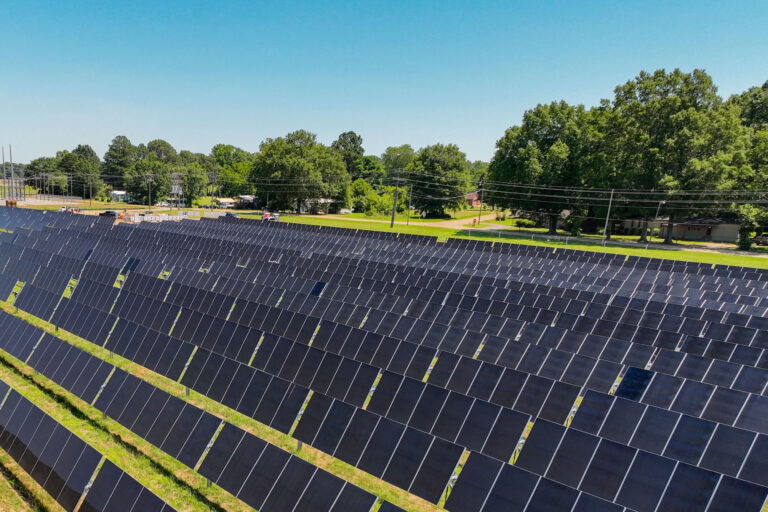We know how to limit climate change due to global warming: big reductions in greenhouse gas emissions.
It’s an urgent problem.
An important question to ask is where we can find the biggest, quickest, easiest cuts in our complex economy? Where’s the low-hanging fruit?
Looking at it that way, one answer stands out: electric power generation from fossil fuels.
What steps do we need to take?
Greenhouse Gas Emissions Progress
Even with the progress we already have made, the electricity grid is still responsible for over a quarter of all greenhouse gas emissions. Continued progress in reducing this footprint is not a given; as we electrify ground transportation, for example, electrical demand could increase by more than a third.
Renewable energy should be a potent weapon fighting climate change. But experts we trust to help fight global warming are instead disarming us. They’ve built a carbon accounting framework that breaks the deep connection between renewable energy and carbon reduction.
Our electricity grid has an enormous carbon footprint now, but it’s not crazy to imagine that it could approach zero-carbon in the next few decades. With renewables, nuclear power, and some technological advances in storage, America could eliminate burning fossil fuels for electricity.
With that tantalizing possibility on the horizon, we should push the accelerator to the floor decarbonizing the grid. Instead, in multiple ways, we’ve put on the brakes.
Green power
Corporations and individuals have shown a hunger for renewable power — it’s the most visible and widely used climate action of all. Yet we’ve created a system for measuring and crediting green power that ensures well-intentioned corporations often just spin their wheels.
The EPA’s Green Partner Power List celebrates several well-known companies for using 100 percent green power. But for most of them, the vast majority of their “green power” is nothing more than the wholesale purchase of commodity renewable energy credits, or RECs.
We’re deceiving ourselves: Those RECs come from old solar and wind projects, already built, or even from hydropower dams constructed decades ago. The billions of kilowatt-hours labeled green power make us feel good, but they do nothing to reduce carbon emissions today or in the future; they do exactly nothing to affect climate change.
Carbon offsets
America is fortunate in having many companies committed to reducing and ultimately eliminating their carbon footprint. They start with their own operations, but in the real world, they reach a point of diminishing returns and need to look to carbon offsets, investing to eliminate carbon emissions somewhere outside of their own operations.
Moving forward on climate change
Adding more renewable power to the grid is a particularly effective way to offset carbon. The technology is mature and continues to improve, the economics work, and the grid is big enough to absorb huge amounts of investment. As a bonus, that investment builds important American infrastructure, creating jobs and tax base here at home.
Yet in the sometimes Alice in Wonderland world of carbon accounting rules, the use of renewable energy to offset carbon emissions isn’t encouraged, it’s forbidden. The rules push away well-intentioned companies from investing in American infrastructure and jobs; they push them instead into a murky world of purchasing trees from landowners in foreign countries.
A damaging myth is taking hold as gospel in sustainability circles: the country’s electric grid is already on the fast track to decarbonization. Problem solved. Move on.
Decarbonizing the grid is not a solved problem. Our success so far has come from three approaches that quickly run into limits:
- The first has been the replacement of coal with natural gas. This is a worthwhile intermediate step, but natural gas is still a nonrenewable fossil fuel with a significant carbon footprint, about half that of coal.
- The second approach has been the imposition of regulatory controls in a few states, particularly California. But in vast areas of the country, including our nation’s capital, a strong regulatory approach is unlikely to emerge.
- The third approach has been the willingness of some organizations to sign long-term power purchase agreements, or PPAs, for new renewable power. This option is confined to a thin tier of the biggest and wealthiest organizations. For every Facebook or Amazon signing PPAs, thousands of others don’t have the financial profile or credit rating to do so.
Right now, we need a robust system of carbon offsets to complement — not replace — what companies are doing in their own operations. Investing in adding renewable power to the American electric grid would be an effective and constructive way to create these offsets.
For the past year, we’ve been working on a way to accomplish this. We build new solar arrays here in the United States and then use the electrical power generated to replace power that otherwise would have been generated by burning fossil fuels.
Our approach ensures that these solar farms are truly additional and located in the most carbon-intensive parts of the grid. If you want to reduce carbon emissions, it makes a lot of difference whether you add renewable power to the low-carbon New England or the high-carbon Midwest power grid.
American businesses have become the front line of the fight against climate change. We’re attempting to create an innovative and practical tool for them. What we have developed is transparent, it is financially attractive to a wide range of businesses and it invests in America. Businesses we’ve presented these ideas to are intrigued and interested.
In the aftermath of the COVID-19 pandemic, America will be rethinking a lot of things. How to create more honest, real-world, and effective weapons in the fight against global warming should be one of them.
Want more information on reclaiming your carbon footprint? Drop us a note on hello@clearloop.us or contact us here if you want to learn more.





